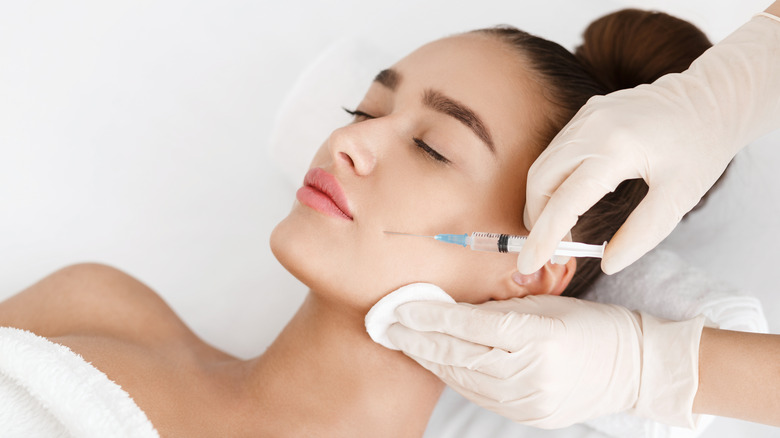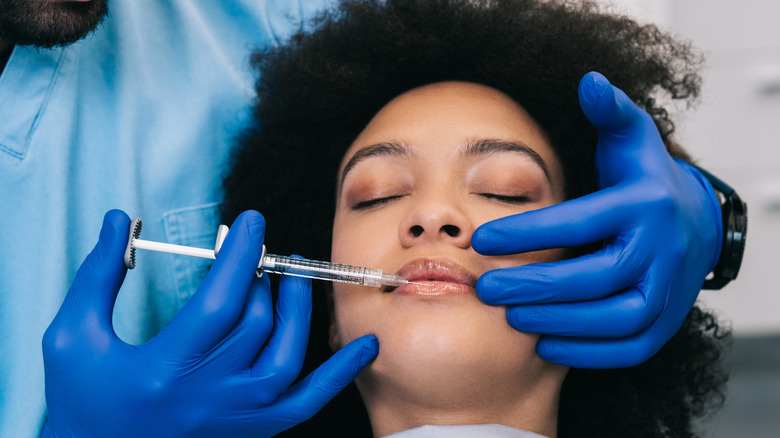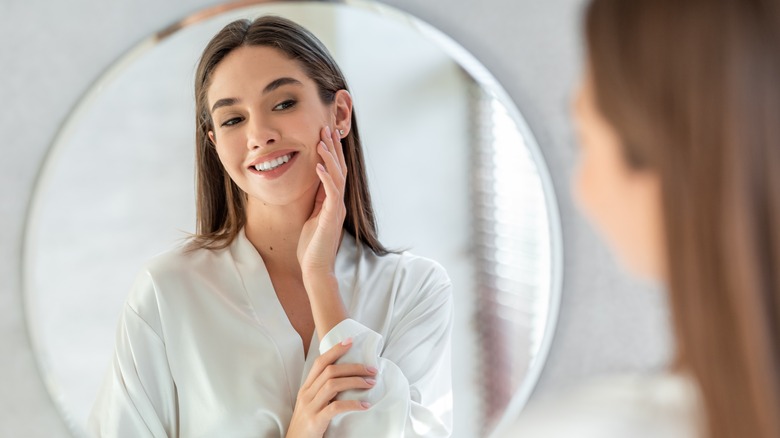Sculptra Vs. Fillers: What's The Difference?
Fillers and Botox are some of the most popular cosmetic procedures people choose to get done to achieve youthful, plump skin. Similar to fillers, Sculptra is an injectable that is used to restore skin to a plump glow. The FDA-approved Sculptra for use to treat deep wrinkles and creases for cosmetic purposes, and ever since then it has become a sought-after treatment option. New York City-based board-certified dermatologist Marie Hayag tells Allure: "The best way to think of Sculptra is the process being similar to growing your lawn with seed, not sod. It's a slow, gradual effect, but it gives the best and most natural results over time."
According to Westport Dermatology & Laser Clinic, one of the biggest differences that sets Sculptra and hyaluronic acid fillers apart is that fillers instantly fill lines and wrinkles, and they don't cause your body to naturally produce more collagen. Sculptra, on the other hand, is a collagen stimulator that triggers collagen production, giving your body the ability to produce it on its own.
The difference between Sculptra and fillers
Fillers are made from a gel-like substance with hyaluronic acid and fill in hollow or wrinkled areas for a plump look immediately, with results only lasting 6-12 months. Sculptra has a liquid consistency to it which is able to penetrate deeper into the dermis (via The Medical Skin Clinic). The results appear more gradually but can last years if the procedure is done correctly. Per Adam Scheiner MD, you will see plumping results immediately after getting Sculptra, but they will disappear after two days.
With Sculptra, you can achieve a much more natural appearance than with filler. Marie Hayag, a New York City-based board-certified dermatologist, tells Allure, "You don't have that puffy or doughy look with Sculptra, it gives the best and most natural results over time." But before you choose to go under the needle, there are a few important factors to consider before getting Sculptra.
Side effects of sculptra
There are a few important factors to consider before getting Sculptra. If you overdo it with fillers, you can typically reverse the effects with hyaluronidase, but with Sculptra, doctors haven't found a way to reverse it just yet. This means that you need to be extremely sure about your commitment to Sculptra, and to its effects, for at least two years. As with all cosmetic procedures, it's important to understand the risks and side effects prior to getting injectables. The risks of Sculptra are swelling, pain, bruising, skin discoloration, itching, bumps, and discomfort.
Similar to Botox and fillers, the healing time is quite quick, and doctors recommend avoiding exercise for at least 24 hours after the procedure, as exercise can affect your facial injections. You will have to massage your face post-procedure for the best results. Shereene Idriss, a New York City-based board-certified dermatologist, tells Allure, "It's not just a financial investment; it's also a time investment because people have to massage their own face for a few days post-procedure to get the product fully integrated."


